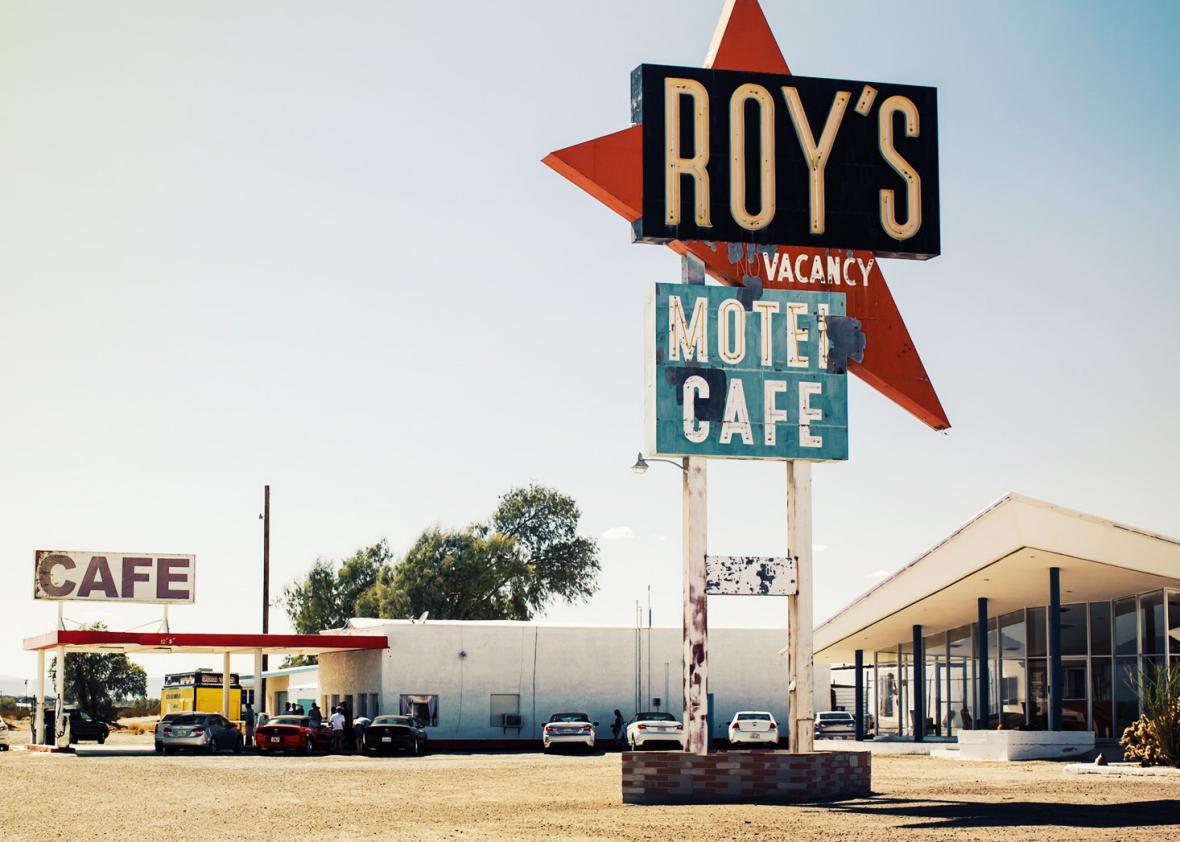Rest stops are a comforting staple of the American highway system, but sometimes when you need one—really need one—in the midst of a long road trip, the closest exit to relieved bladders and stretched legs can seem miles away. How far apart are rest stops supposed to be placed on the interstate?
According to federal policy, about every half-hour of driving or so there should be a place to take a break. This includes state-run rest stops, commercial rest stops, and regular city exits—in other words, the placement of official rest stops is calculated against the existence of other, non-state-run opportunities to pull over.
The official purpose of a rest area is for safety and convenience, as stipulated in the Federal-Aid Highway Act of 1956, which created the national interstate system. The act recognized that in some rural parts of the interstate opportunities to exit the highway would be few and far between. Since shoulders were meant only for emergencies and vehicle breakdowns, occasional rest areas were necessary. The half-hour rule of thumb was set out in a 1958 policy by the American Association of State Highway Officials that laid out detailed standards for the design and placement of rest areas in the national interstate system. The vast majority of rest sites were developed concurrently with the highway system itself in the two decades following the 1956 act.
Although the 1958 policy did not designate minimum or average distances between sites—that would be too complicated given the many variable factors on a highway like traffic volume, topography, and climate—it broadly stated that there should be enough rest areas to “reasonably accommodate the safety rest needs of Interstate highway travelers” and “encourage drivers to use them as a safety measure to break long periods of travel.”
Within the half-hour guideline, rest site placement also took into consideration safety, usefulness, the cost of land, natural scenic views, and points of special interest, in addition to factors like drainage and availability of drinking water. More small-to-medium-sized areas were preferred to fewer larger areas. Adjacent states would coordinate so rest sites weren’t too close together on the same highway near the state line.
Some states have since issued their own guidelines, especially states with a lot of vast, rural landscape. For instance, in 2009 Minnesota recommended spacing rest areas every 30 miles or less to reduce drowsy driving-related crashes. Texas’ plan includes full rest areas with toilets, but the state also provides smaller picnic areas in between that might comprise nothing more than some tables and parking spaces.
Before the federal intervention in 1956, drivers couldn’t count on a place to stop at all. The character of early rest areas (then called roadside parks) ranged widely and most had sprung up organically. The first unofficial rest stop is believed to have appeared in Michigan in 1929, where a road engineer noticed people who had pulled over to picnic on a tree stump, albeit with difficulty. The engineer was inspired to create some roadside picnic tables at the spot, and the idea spread. Early roadside parks were usually found by long stretches of road, particularly near scenic vistas or historic landmarks, and were often very rustic, with no running water or flushing toilets.
In the early 1960s and ’70s, some states began to view rest stops as opportunities to show off an area’s regional character, since these sites were often the only contact a traveler would have with the local landscape. South Dakota has teepee rest areas, Texas has picnic tables under oil rig towers, and in Kentucky you’ll find a 1860s Southern mansion with period furnishings—the only historic house restored as a rest area in the country.
In the past decade, some states have begun to question how necessary rest stops are on the 21st-century highway, especially in relation to the costs to maintain them. Although the costs are relatively low, rest areas became a major target to trim state transportation budgets during the recent recession. Virginia closed 19 of 42 rest areas in 2009, resulting in a public outcry; they were reopened the following year after Bob McDonnell made it a top promise during his successful campaign for the governorship. To help with funding, some states like Iowa are experimenting with public-private partnerships where businesses sponsor a rest area.
Explainer thanks historian Joanna Dowling, who runs the website restareahistory.org.
Take the grand tour of the rest of our Travel Explainers here.
